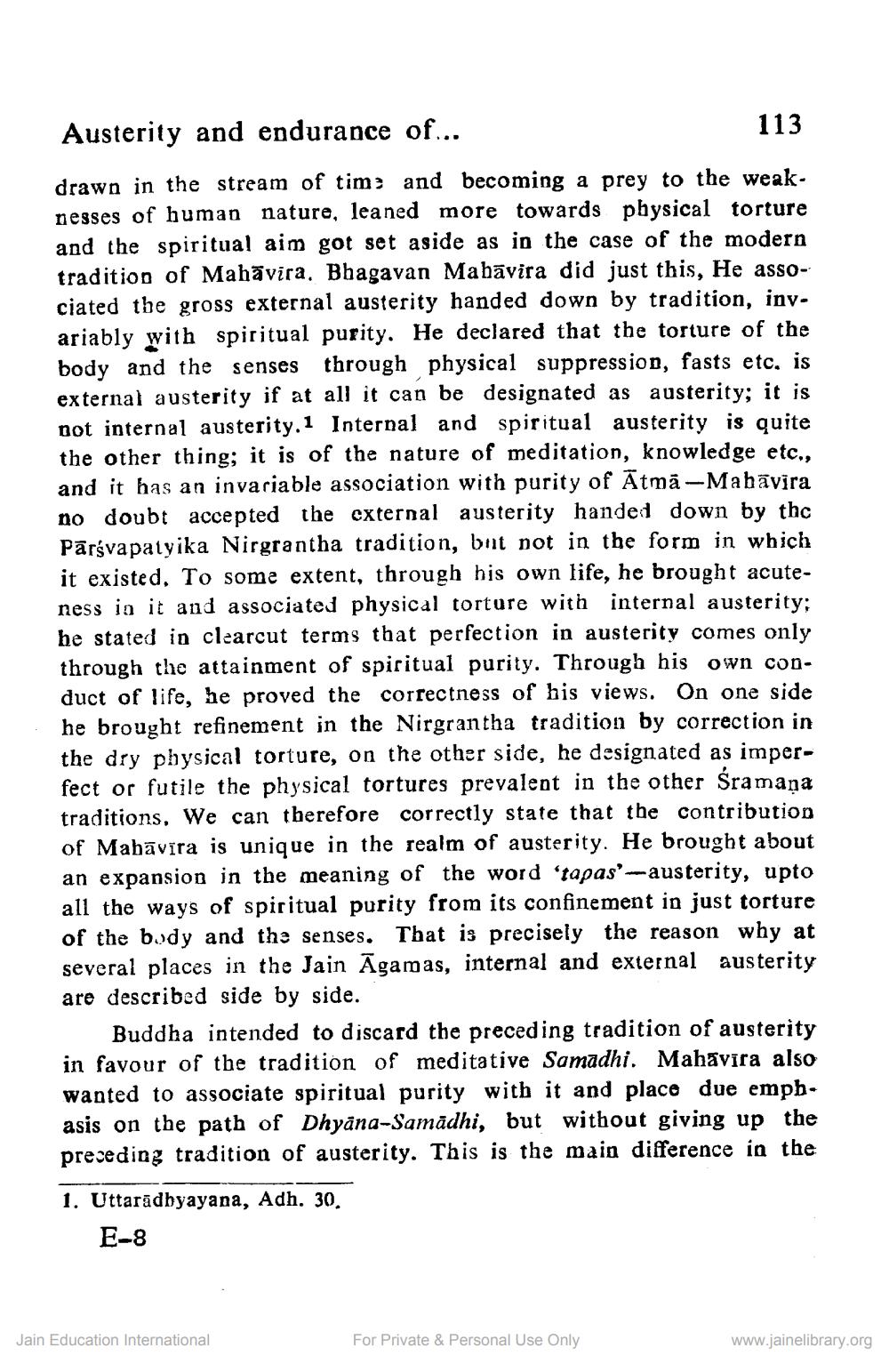________________
Austerity and endurance of...
113
drawn in the stream of timand becoming a prey to the weak. nesses of human nature, leaned more towards physical torture and the spiritual aim got set aside as in the case of the modern tradition of Mahāvira. Bhagavan Mabāvira did just this, He associated the gross external austerity handed down by tradition, inyariably with spiritual purity. He declared that the torture of the body and the senses through physical suppression, fasts etc, is external austerity if at all it can be designated as austerity; it is not internal austerity.1 Internal and spiritual austerity is quite the other thing: it is of the nature of meditation, knowledge etc.. and it has an invariable association with purity of Ātmā-Mabāvīra no doubt accepted the external austerity handed down by the Pārsvapatyika Nirgrantha tradition, but not in the form in which it existed. To some extent, through his own life, he brought acuteness in it and associated physical torture with internal austerity; be stated in clearcut terms that perfection in austerity comes only through the attainment of spiritual purity. Through his own conduct of life, he proved the correctness of his views. On one side he brought refinement in the Nirgrantha tradition by correction in the dry physical torture, on the other side, he designated as imperfect or futile the physical tortures prevalent in the other Sramaņa traditions, We can therefore correctly state that the contribution of Mabāvīra is unique in the realm of austerity. He brought about
ansion in the meaning of the word 'tapas'austerity, upto all the ways of spiritual purity from its confinement in just torture of the body and the senses. That is precisely the reason why at several places in the Jain Āgamas, internal and external austerity are described side by side.
Buddha intended to discard the preceding tradition of austerity in favour of the tradition of meditative Samadhi. Mahavira also wanted to associate spiritual purity with it and place due emph. asis on the path of Dhyāna-Samādhi, but without giving up the preceding tradition of austerity. This is the main difference in the
1. Uttarādbyayana, Adh. 30.
E-8
Jain Education International
For Private & Personal Use Only
www.jainelibrary.org




